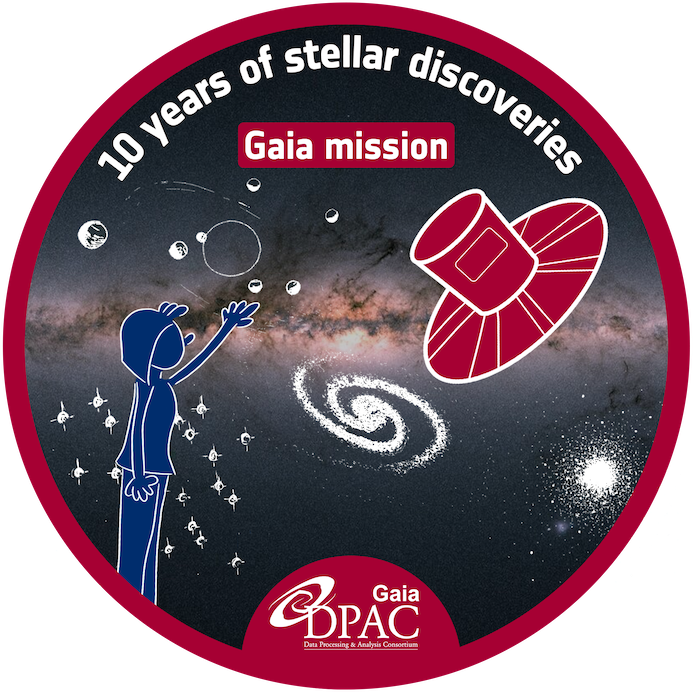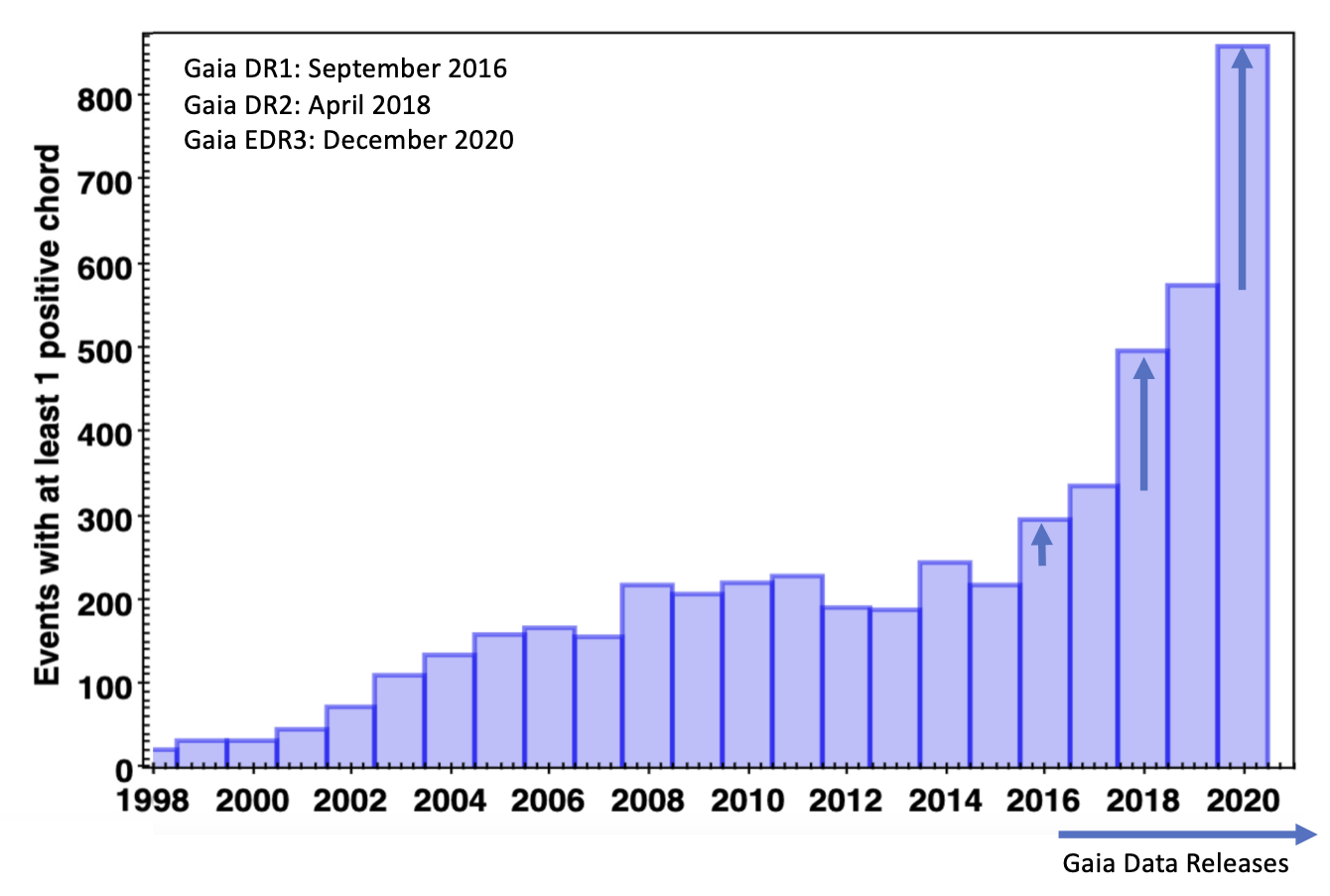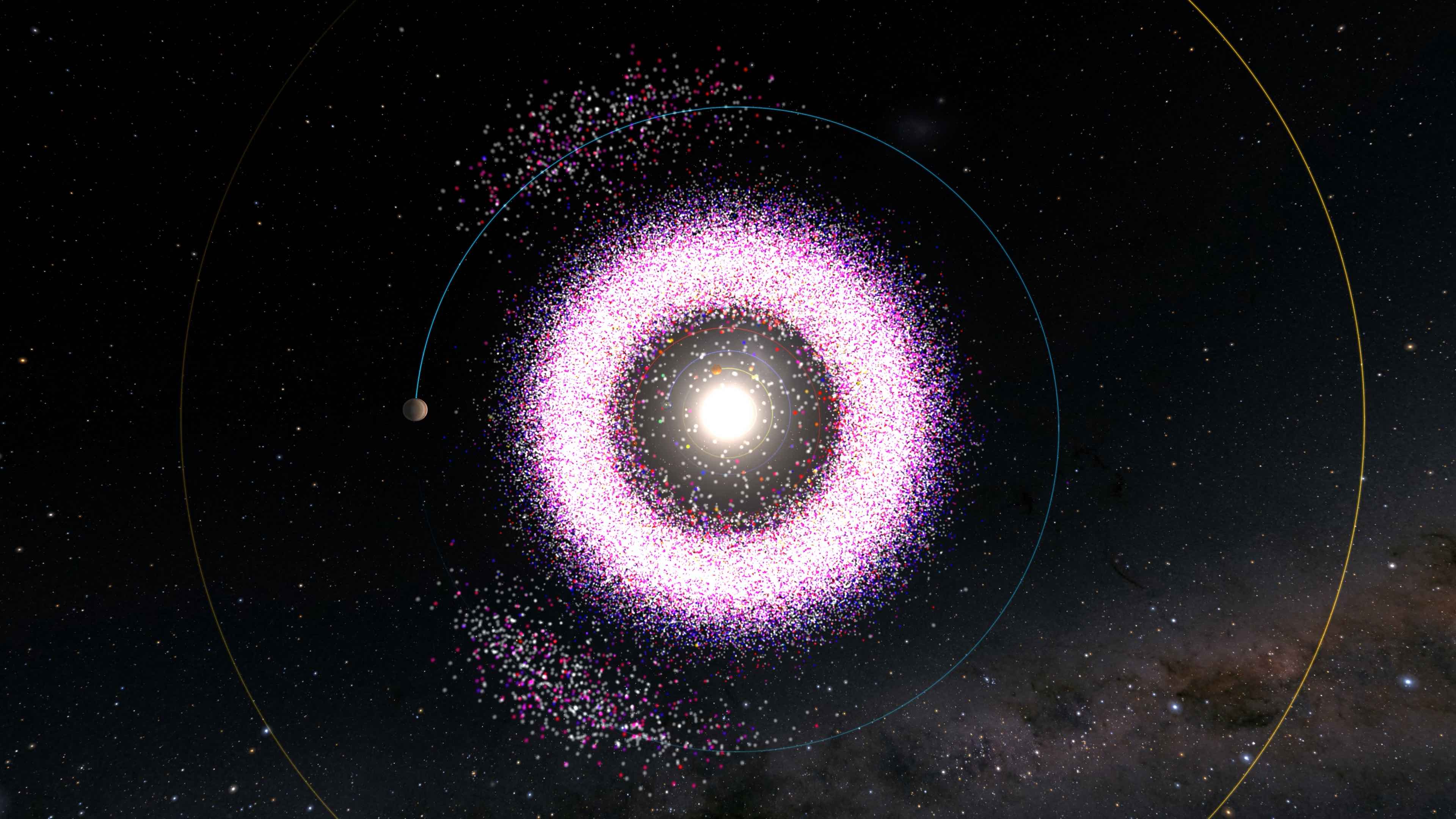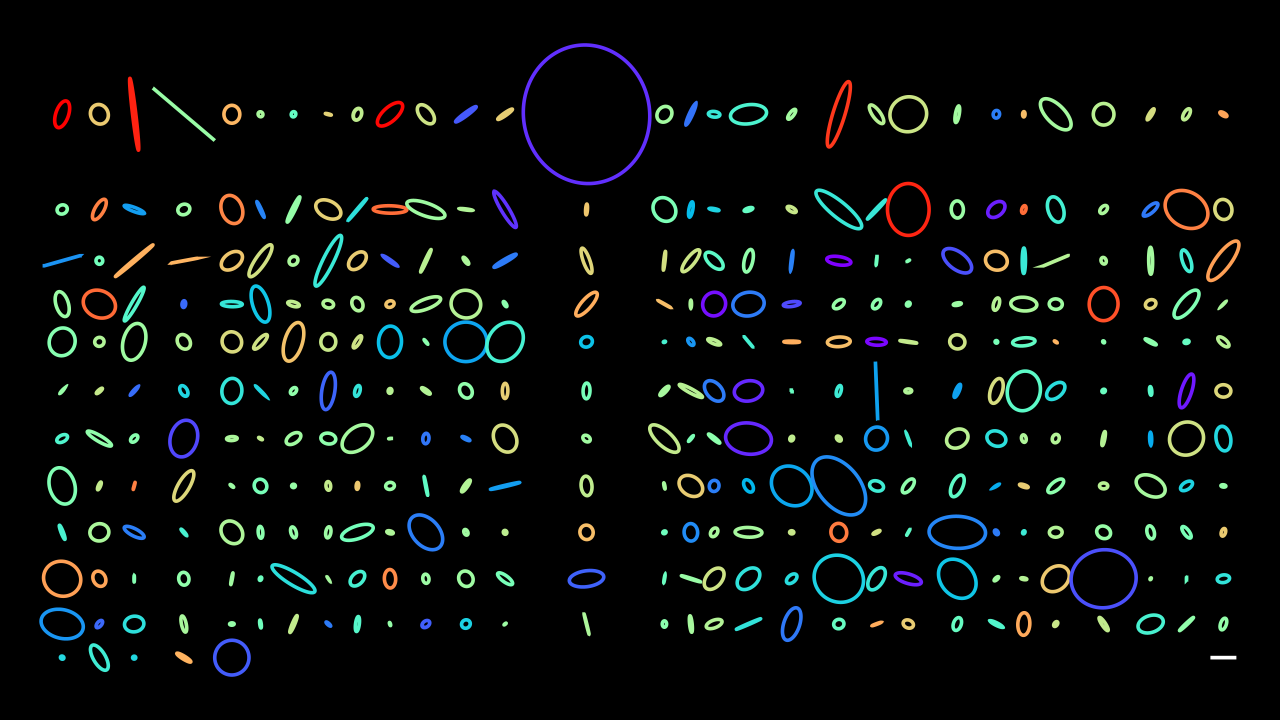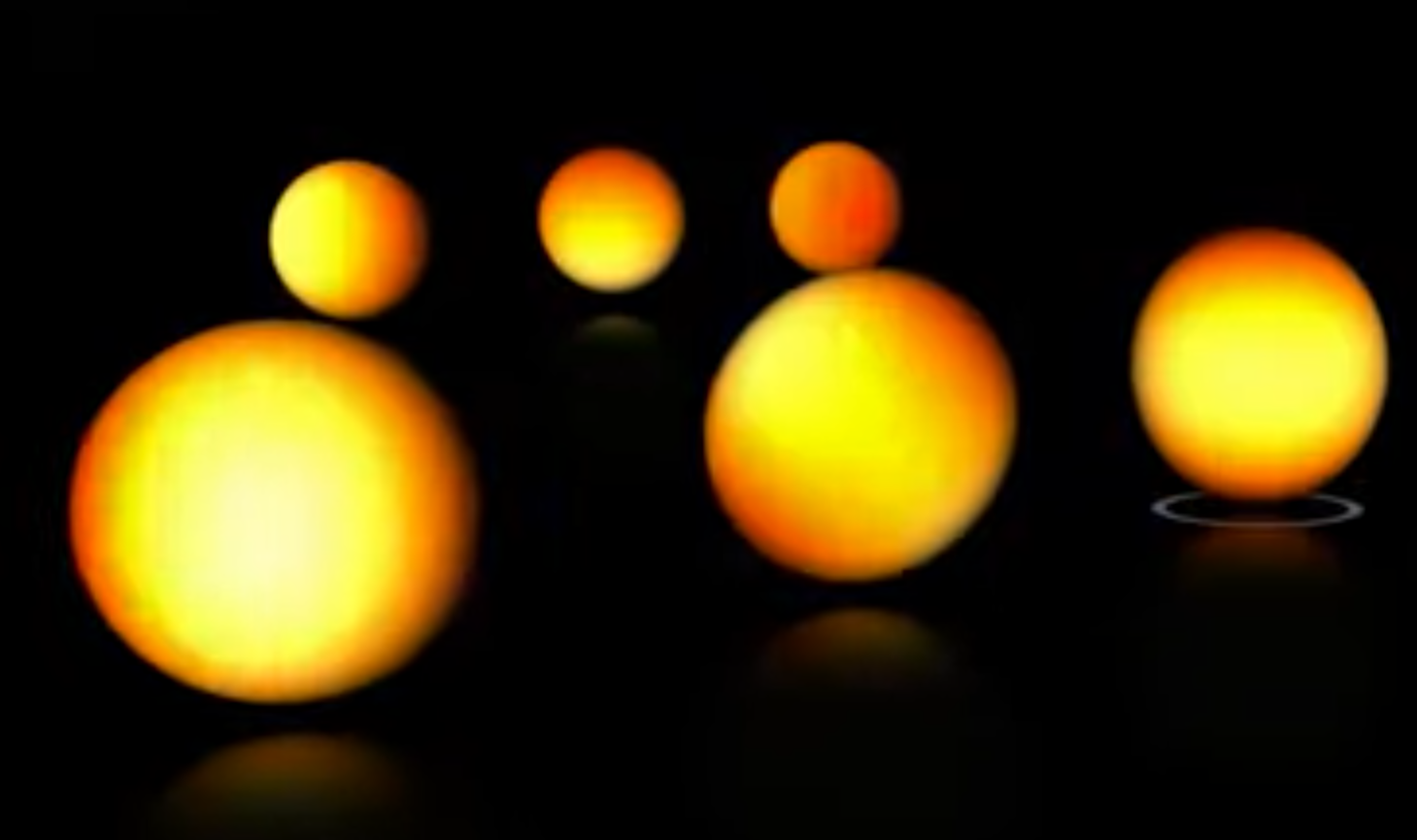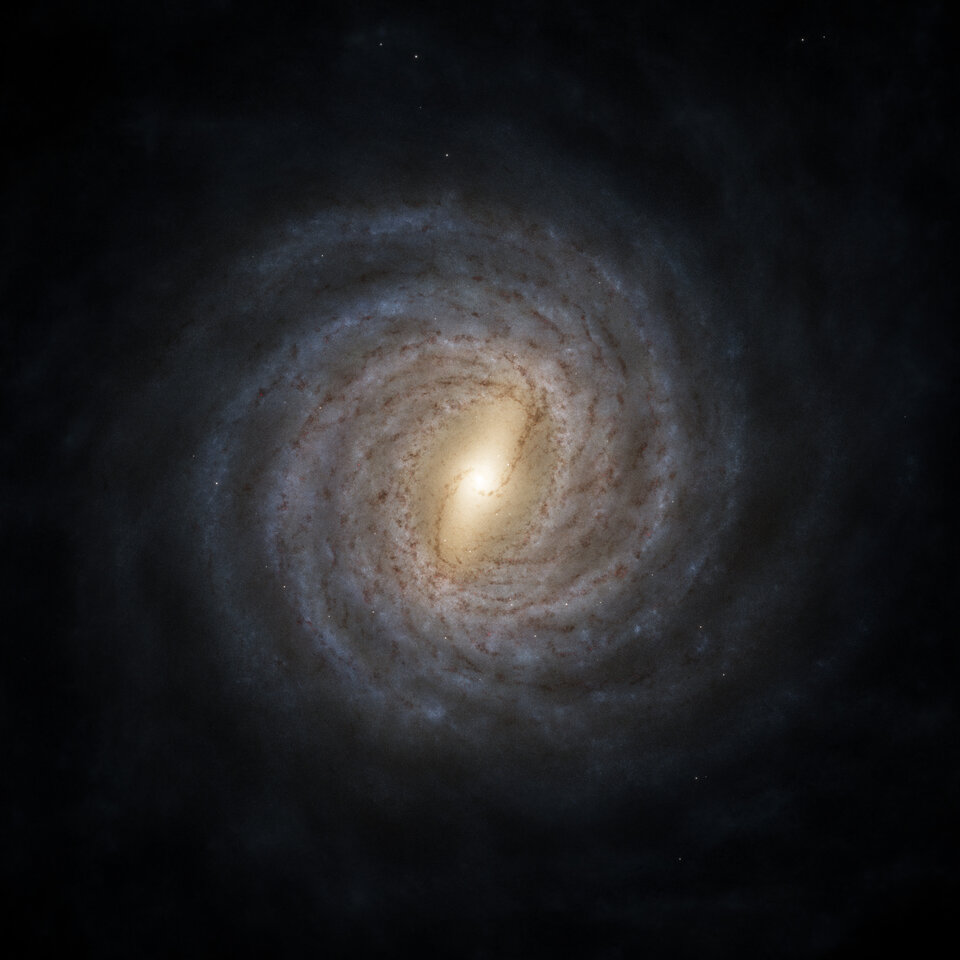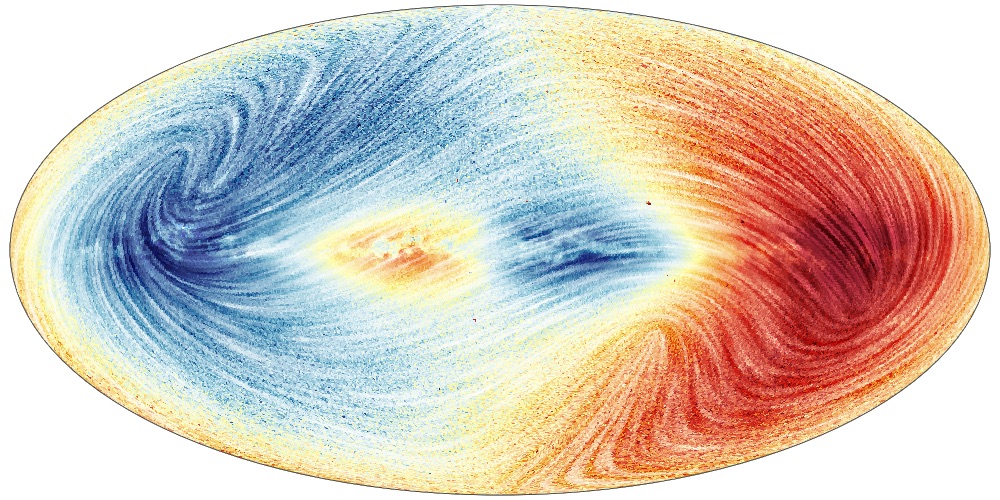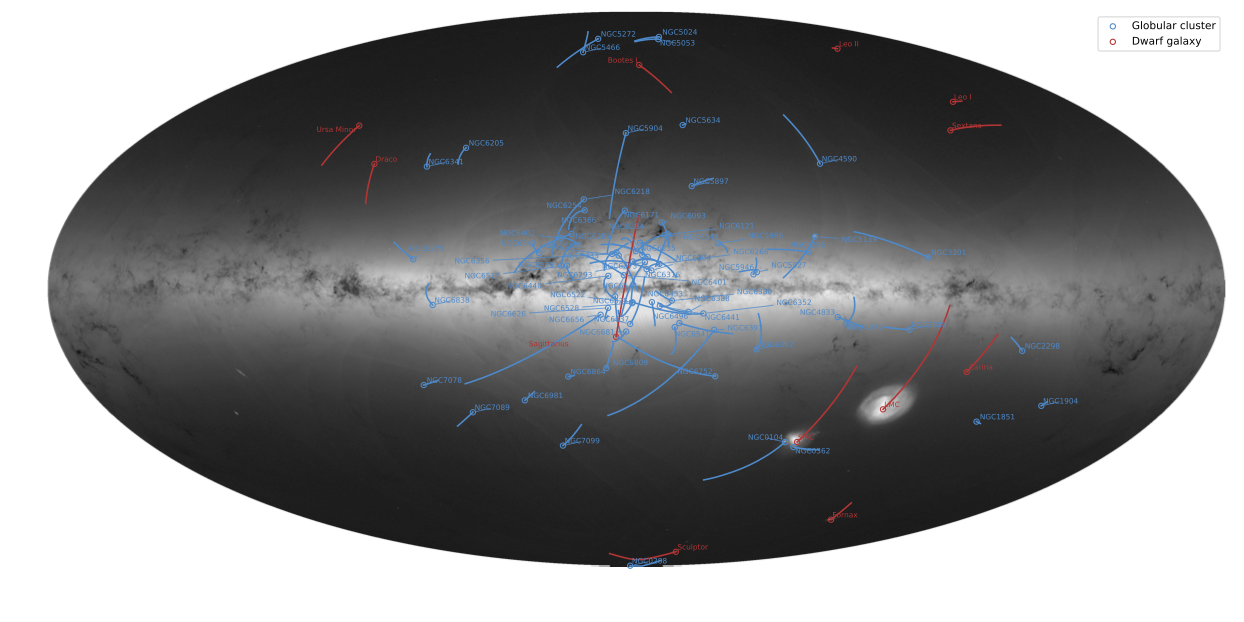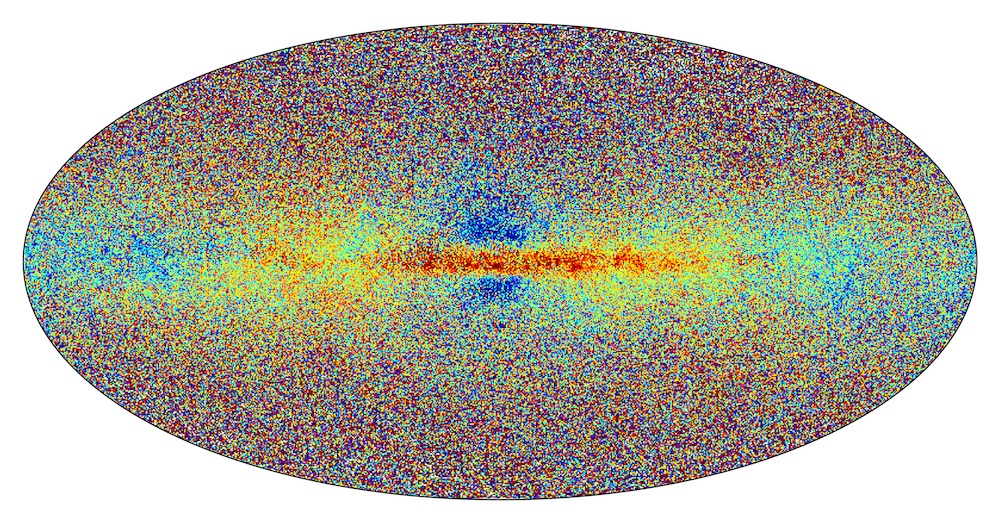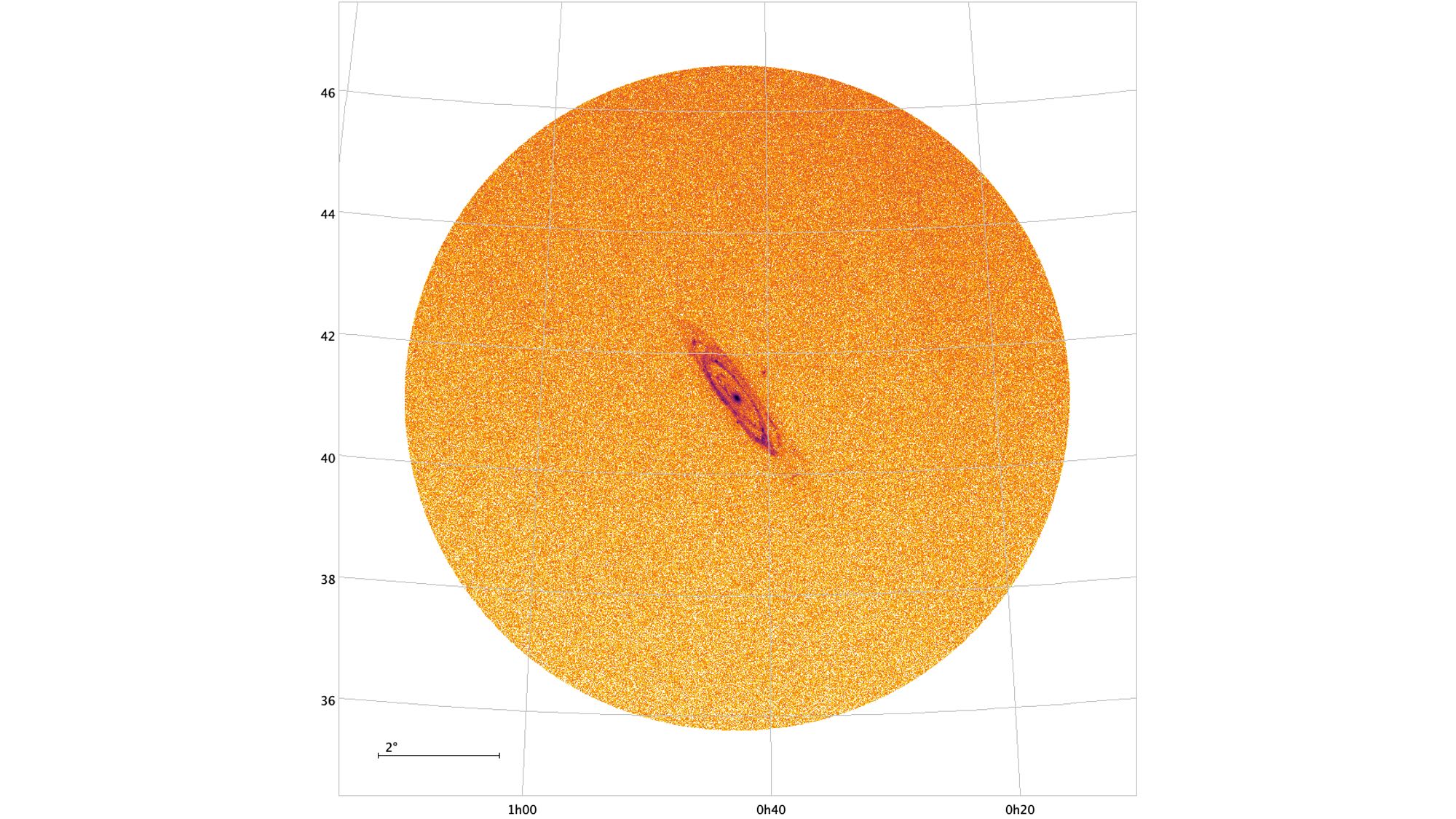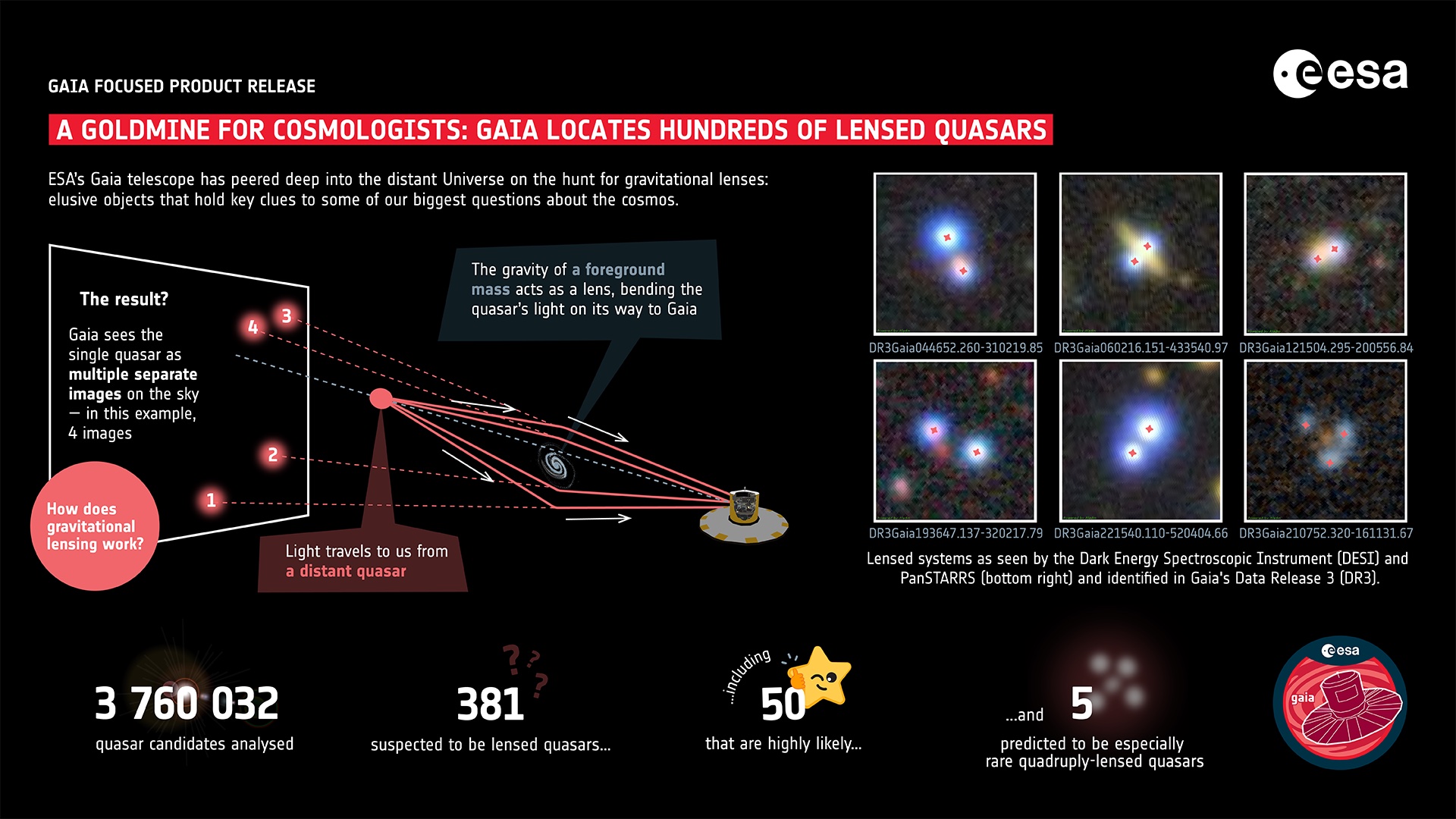Gaia Launch Anniversary - 10 years in space - Gaia
EARTH: Stellar occultation
Since Gaia, a steep increase is seen in the chance to see an asteroid move in front of a star. These observations made from Earth allow to extend our knowledge on asteroids.
- Removed a total of (2) style text-align:center;
SOLAR SYSTEM: Asteroids and moons
Gaia mapped over 157,000 asteroids with their positions, brightness and has provided reflectance spectra for more than 60,000 of them. This allows to study asteroid families in more detail.
- Removed a total of (3) style text-align:center;
MILKY WAY: Stellar companions
Many stars have companions, be that another star, an exoplanet or a black hole. Gaia published the largest catalogue of stellar companions ever.
- Removed a total of (3) style text-align:center;
MILKY WAY and BEYOND: Special stars
Gaia investigates the particular behaviour of stars. Which ones are brightening. Which ones are variable and why? Is that a starquake? Gaia provides a classification of many stars. Catalogues of special stars are cleaner leading to more robust science results.
- Removed a total of (3) style text-align:center;
Milky Way: Spiral arms and structure
Gaia has mapped the Milky Way with a detail never seen before. The structures seen, which stars form groups, imprints of former merger events... Many advances were made thanks to Gaia.
- Removed a total of (3) style text-align:center;
Milky Way and BEYOND: 3D motion
How stars moved through space was barely known before Gaia. With Gaia, kinematic studies of our Milky Way opened up, with its publication of over 1.4 billion motions across the sky, and its subset of almost 34 million stars with full 3D velocities. The biggest catalogue of stellar motion ever published.
- Removed a total of (3) style text-align:center;
Beyond the Milky Way: Milky way satellites
Gaia maps each star individually. When Gaia sees the Milky Way satellites, it is because it sees some of the stars within these satellites. With Gaia's data on these extragalactic stars, extensive studies of the interaction between the Milky Way and its satellites are finally possible.
- Removed a total of (3) style text-align:center;
MILKY WAY and beyond: Stellar DNA
Gaia published the first all-sky chemical map of the Milky Way. What are stars made of? With Gaia's astrophysical parameters, a boost was given to studies on stellar evolution in the Milky Way.
- Removed a total of (3) style text-align:center;
Beyond the Milky Way: Gaia's galaxies
Some of the objects seen by Gaia are other galaxies, out there beyond the Milky Way. Gaia's catalogue of galaxies provides an all-sky view of close-by galaxies.
- Removed a total of (3) style text-align:center;
Beyond the Milky Way: Cosmology with Gaia
Gaia's catalogue of quasars allows to further study the structures in the Universe. With Gaia's ability to distinguish gravitationally lensed quasars, it contributes to studies on dark matter and dark energy. Studies of gravitational lenses also help to improve our knowledge of the Universe itself and its highly debated expansion rate.
- Removed a total of (3) style text-align:center;
Gaia DPAC
Thanks to the ~450 people in the Gaia Data Processing and Analysis Consortium, Gaia's data are processed and prepared for publication to the astronomical community.
- Removed a total of (3) style text-align:center;
Gaia fairing logo
The Gaia space telescope was launched on 19 December 2013 and today marks its 10th launch anniversary. Gaia has been a true revolution and has impacted almost every field in astronomy in some way.
- Removed a total of (3) style text-align:center;








































 Sign in
Sign in
 Science & Technology
Science & Technology
